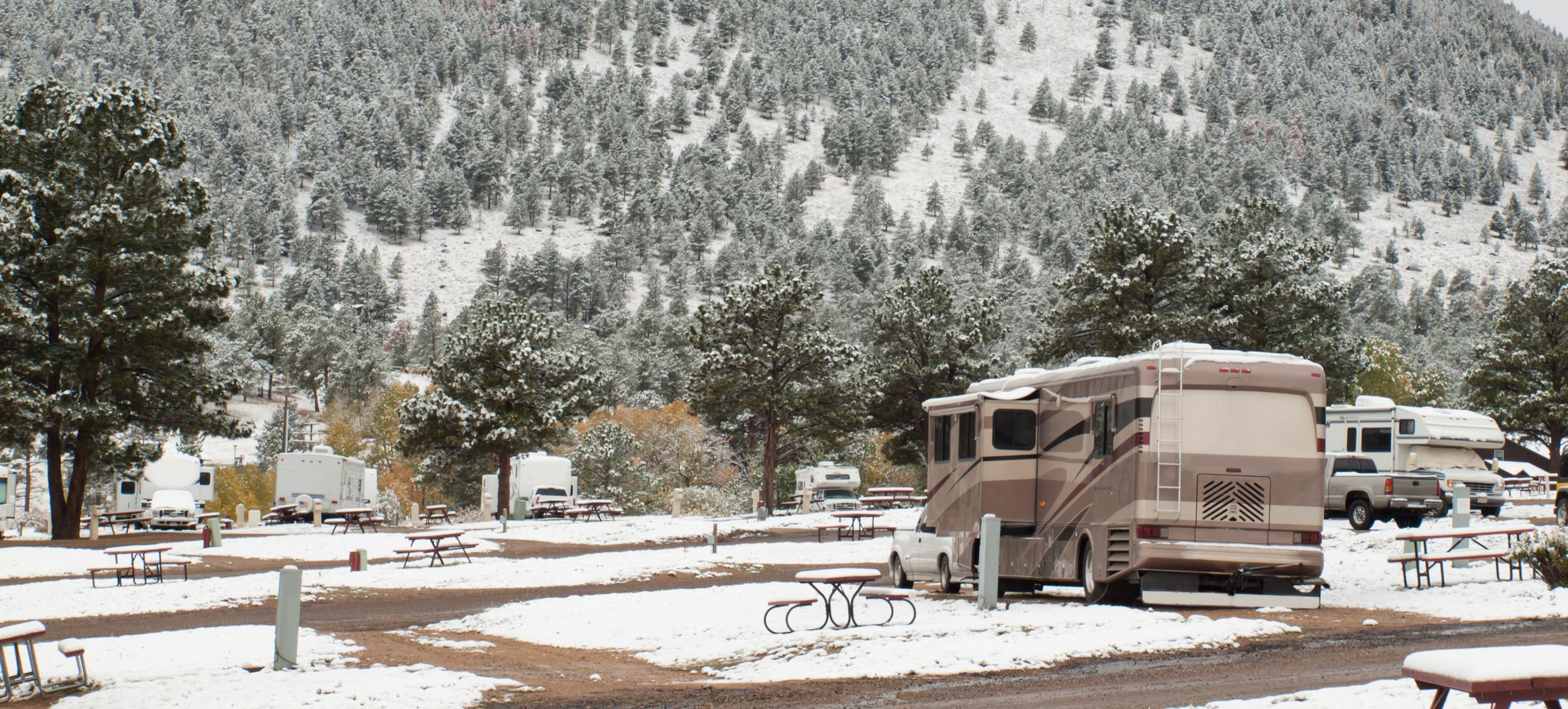Even though most motorhomes and travel trailers typically have smaller energy needs than your traditional permanent homes, it’s still going to cost you to heat your RV and maintain a comfortable indoor environment. Here are some ideas to help curb energy costs as well as increase the efficiency of heating your RV – especially in colder temps.
- Cover vents. Don’t lose heat when you need it the most. Cover vents with pillows to block air trying to escape out of the RV. You can make your own or purchase from an RV supply store.
- Use a skirt. The details of skirting your RV (including what to look for during purchasing) are included in this article “RV Skirting,” but in a nutshell, skirting prevents airflow beneath an RV, which in effect adds a layer of insulation. You can also add heat to keep things underneath toasty warm.
- Limit propane use. There are a lot of things that run on propane in your motorhome or travel trailer – stoves, furnaces, run portable electrical heaters, etc. – so prioritize and turn off what you don’t use with regularity. Or make an effort to use it less. You also may be able to find alternatives. For instance, you don’t need the stove. Use a couple electric appliances and a crockpot instead to manage the cooking.
- Check the windows. If you don’t already have double-pane insulated windows, check with the manufacturer of your particular RV, which may already have an option in stock. If your manufacturer doesn’t, then take a look at other manufacturers or even for used windows. The Internet is a good place to look around, particularly on forums. Also check your windows for any leaks. Reset the window or place some seals around the faulty windows to reduce the cool air inflow and keep the heat in your RV.
- Add or replace insulation. One issue is the reduction in the amount of insulation compared to a traditional home. However, high-tech materials are now widely available and being used in RV manufacturing. It could be costly to replace what you have with a new product, but you’ll be more comfortable and realize the savings over the coming years of use. And make sure to use insulation that is specifically designed for RVs.
- Use the sun to your advantage. To reduce electrical costs, consider adding solar panels. This can be an expensive upgrade initially, but again the savings will build as the years go by. Plus, you have another way to recharge your battery, and a charged battery can be useful in certain situations when electricity may not be available. Also, if you’re camping when there are cooler temperatures during the day, choose a spot that has more direct sunlight rather than shade.
- Insulate water lines. Water lines, even plastic ones used in RVs, are susceptible to the cold. Wrap the lines in pipe wrap or insulation on your own, though not too close to the water heater. You’ll get hot water, faster, which saves on propane or electrical use.
- Choose where you’re going to stay. The size of your electric bill not only depends on the size of your RV and how much power you draw to run amenities (fridge, oven, furnace, etc.), but on where you stay as well. Resorts might be more expensive than a hookup at your mom and pop campground. Where you are in a particular state will also affect rates. Your length of stay will also help determine your monthly electric bill. Typically, if you’re staying for a short period of time, the cost for electricity will be rolled into the overall fee. But if you’re staying for an extended period of time, your electricity use will be metered and you’ll be presented with a monthly bill.
If you have a newer RV, you already benefit from the use of insulating materials, dual-pane windows, and other energy-saving devices. Follow these additional tips, and you’ll see cost savings as well as increased energy efficiency in your RV.

